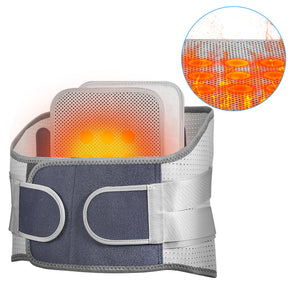What are 4 Symptoms of an LCL Injury?

What is LCL? The lateral collateral ligament (LCL) is a band of tissue on the outer side of the knee. It connects the femur of the thigh to the fibula of the calf.
The LCL can stabilize the lateral side of the knee joint, especially when the knees are placed under stress or knee flexion and rotation. In simpler words, it prevents your knees from bending outward abnormally.
An LCL injury usually occurs when this ligament tears upon overuse, often leading to pain, swelling, and bruising.
Learning what an LCL injury is, knowing "What are 4 symptoms of an LCL injury", and recognizing its symptoms early on can help minimize the recovery period.

What are 4 Symptoms of an LCL Injury?
What are 4 symptoms of an LCL injury? There are four major signs of LCL tears. If you experience any of them, you should visit your nearest healthcare professional to assess the injury site. You may further undergo knee joint X-rays to determine the severity of your injury.
1. Pain
A lateral collateral ligament (LCL) injury is usually the result of external pressure over the ligament or a collision that pushes the knee joint from the inside, leading to stress on the outer part of the joint.Immediately following the LCL knee injury, you may feel sharp pain around and from the center of the knee. The level of pain may vary depending on the severity of your injury.
2. Swelling
The second major symptom you will notice right after the injury is swelling and tenderness around the afflicted knee. The swelling may happen immediately following the injury or may even develop two to three hours after it has occurred.It is usually the result of bleeding from internally injured blood vessels. This is also one of the body's natural responses to injury that prevents us from using the area and giving it time to heal.
3. Bruising
Some people may experience slight bruising on the skin around the knee, which may also be the result of blood vessels tearing under the skin. The blood leaks into areas under the skin, causing bruising.
4. Instability or Looseness
After the LCL tear, you may find it difficult to put weight on your knee, experience instability or looseness when you move around, or feel as if your knee is likely to give way.What Causes LCL Injury?
The causes of LCL injuries are usually related to the following factors:
1. Direct Impact
Direct impact to the knee can cause the lateral collateral ligament to be stretched, worn down, or torn. This is because a direct blow to the inside of the knee can also impact the ligament. Falling over and directly hitting your knee on the pavement can lead to an LCL knee injury.
2. Improper Exercise Techniques
Exercising the lower half of the body involves much movement around the knees, including pivoting, flexing, or jumping. However, improper technique and posture during exercise can lead to wear and tear around the knees. Over time, it can lead to knee instability and LCL injuries.
3. Loss of Balance in the Body
Loss of balance in the body when walking, running, or sprinting can place pressure on the knees, often leading to an LCL stretch. This is due to the knee joint being subjected to abnormal force, causing the LCL to strain and tear.
4. Sports
LCL injuries are much more common among athletes, particularly those who engage in direct-contact sports such as basketball, football, skiing, and hockey. These sports usually involve quick turning or changing direction, placing sudden pressure on the knee, and straining the lateral collateral ligament.
How to Alleviate LCL Injury?
Pain, swelling, and instability are common signs you will experience during recovery. An LCL injury usually takes around 3 to 12 weeks to heal, which depends on the severity of your case.The following are general treatment recommendations for different levels of LCL injury:
1. Level 1 Injury Treatment
Level 1 LCL injury is mild, and your ligament is only lightly overstretched. It allows for home treatment, so you can adhere to the RICE principles of rest, ice, compression, and elevation. Using crutches for mild activity when necessary can reduce pressure on the lateral collateral ligament.
In addition, wearing a hinged knee brace can provide additional stability and help protect the knee joint, especially during activity. LCL injuries at this stage typically take 3 to 4 weeks to heal. [1]
2. Level 2 Injury Treatment
Level 2 LCL injuries are considered moderate, with a partial tear or overstretching in the ligament. You may experience slight knee instability along with pain and inflammation around the knee.This type of injury will demand a professional diagnosis to determine the exact degree of the injury and a treatment plan. More alleviative methods include physical therapy and reduced movement to prevent further injury. Moreover, a hinged knee brace for lateral collateral ligament injury support is useful to maintain stability. At home, you can follow the RICE principle. The total recovery period can stretch from eight to twelve weeks.
3. Level 3 Injury Treatment
Level 3 injury is the most severe LCL tear, in which your ligament could be separated or torn completely, leading to complete instability of the knees. This grade of injury may need surgical intervention.Appropriate care and rehabilitation plans, such as physical therapy and medication, are required after surgery to promote healing. In the early stages of injury, anti-inflammatory drugs are needed to control pain and swelling. In addition, it is necessary to wear a knee brace for LCL injury for a longer period of time to provide sustained support.
Fivali's Hinged Knee Braces for LCL Recovery
Now, you know “what are 4 symptoms of an LCL injury," its causes, and how you can alleviate the pain and recover faster. If you are looking for a knee brace that can provide stability and support while also providing protection and pain relief, Fivali’s hinged knee braces are a good choice.
Our specially designed braces help support the knees, reduce pain, and improve stability for those recovering from an LCL knee injury. The Fivali hinged knee brace comes with two hinges on both sides to help prevent excess flexion, extension, or rolling during your recovery. They are highly recommended for those who suffer from level 2 or 3 LCL tears.

Lateral collateral ligament injury is a common knee joint injury, with symptoms including pain, swelling, bruising, and instability of the knee joint. The method of treating LCL injuries depends on the severity of the injury, generally including the RICE principle, wearing LCL knee braces, and appropriate exercise and physical therapy.
Choosing appropriate knee pads, such as Fivali's hinged knee pads, can provide necessary support and protection for the knee joint, helping to accelerate the recovery process. Visit our website to explore detailed information on hinged knee braces!
References
[1] LCL Tears. Available at: https://my.clevelandclinic.org/health/diseases/21710-lcl-tears (Accessed: 24 June 2024)













